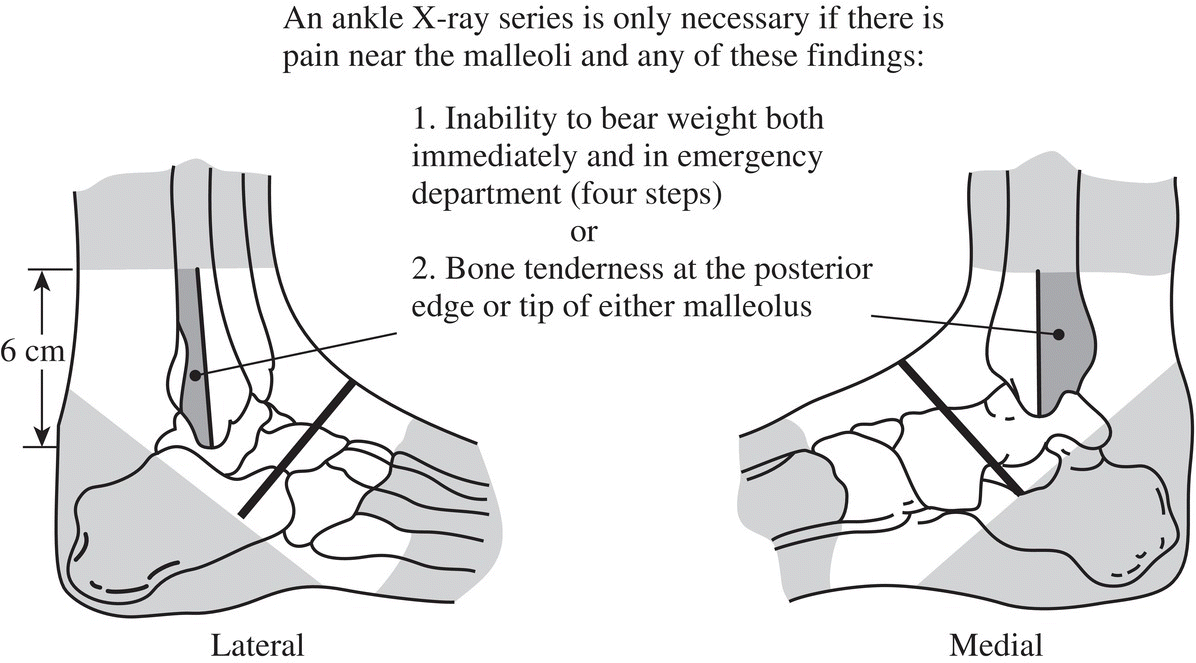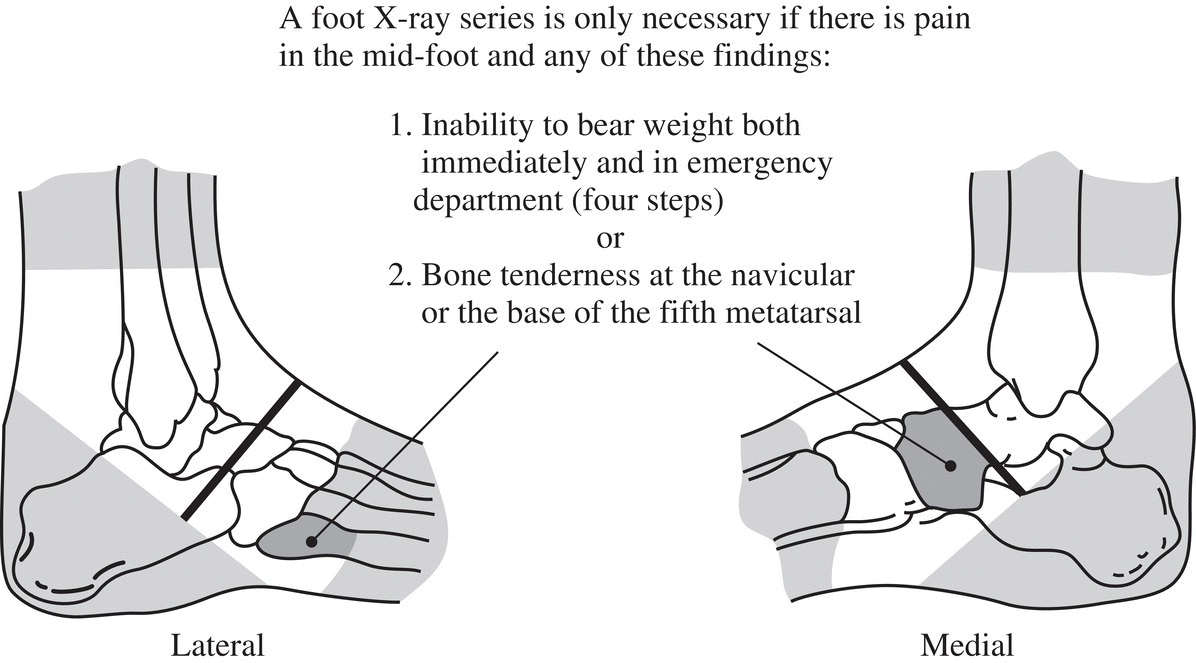Jesse M. Pines1,2 and Fernanda Bellolio3 1 US Acute Care Solutions, Canton, OH, USA 2 Department of Emergency Medicine, Drexel University, Philadelphia, PA, USA 3 Department of Emergency Medicine, Mayo Clinic, Rochester, MN, USA Patients with acute foot and ankle injuries often present to the emergency department (ED), most commonly with injuries occurring after over‐inversion of the ankle. In a 2010 study using data from the National Electronic Injury Surveillance System (NEISS), all ankle sprain injuries presenting to EDs were identified and incidence rate ratios were calculated by age, sex, and race.1 The overall incidence rate was 2.15 per 1000 person‐years in the United States, with a peak incidence in the 15–19 age cohort with an incidence of 7.2 per 1000 person‐years, with males 15–24 having a substantially higher incidence compared to females, with an incidence rate ratio of 1.53. Other notable study findings were that about half of all ankle sprains occurred during athletic activity with basketball (41%), football (9%), and soccer (8%) associated with the highest prevalence of injury. Figure 10.1 The Ottawa ankle and foot rules. (Reproduced with permission from Stiell IG, Greenberg GH, McKnight RD, et al. Decision Rules for the Use of Radiography in Acute Ankle Injuries: Refinement and Prospective Validation. JAMA 1993; 269 (9): 1127–1132. ©1993, American Medical Association.) However, regardless of mechanism, ankle injuries can result in either ankle fractures (typically seen on a three‐view ankle series) or foot fractures (also seen on a three‐view foot series). Among ankle and foot sprains, only a small percentage will ultimately have fracture. This low overall prevalence of fractures (about 15%) led to the development of the Ottawa ankle and foot rules. The Ottawa ankle and foot rules originated nearly 30 years ago. They were derived to have a sensitivity of 100%; if the criteria for the rules (listed in Figures 10.1 and 10.2) are met, fractures can be effectively ruled out based on clinical evaluation, and radiography can be deferred. In the studies that formed the basis for the Ottawa ankle and foot rules, patients were excluded if they had a delayed presentation of injury (greater than 1 week), had altered mental status, or were pregnant. The Ottawa ankle and foot rules are probably the best‐studied decision rules in emergency medicine. The rules have been validated in multiple settings across multiple cultures. The purpose of this chapter will be to briefly review the evidence behind the Ottawa ankle and foot rules and to examine their use in children. Figure 10.2 The Ottawa foot rules. (Reproduced with permission from Stiell IG, Greenberg GH, McKnight RD, et al. Decision Rules for the Use of Radiography in Acute Ankle Injuries: Refinement and Prospective Validation. JAMA 1993; 269 (9): 1127–1132. ©1993, American Medical Association.) How strong is the evidence supporting the use of the Ottawa ankle and foot rules to clinically exclude fractures of the ankle and midfoot? In 2003, Bachmann et al. performed a systematic review and meta‐analysis of the evidence on the Ottawa ankle and foot rules.2
Chapter 10
Acute Ankle and Foot Injuries
Background


Clinical question
![]()
Stay updated, free articles. Join our Telegram channel

Full access? Get Clinical Tree





